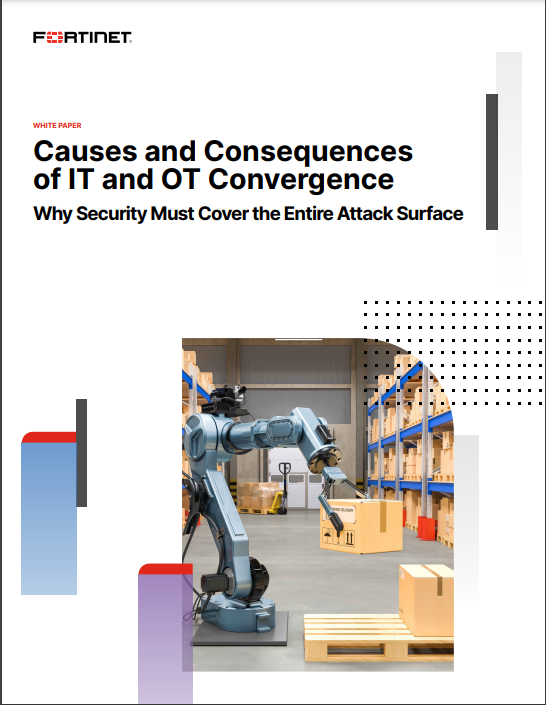
Causes and Consequences of IT and OT Convergence - Free Download
Until recently, operational technology (OT) and information technology (IT) had completely different purposes and were on separate, independent networks. But digital transformation (DX) is forcing the merger of the networks to reduce costs, increase productivity, and gain or maintain competitive advantage.
Executive Summary
Until recently, operational technology (OT) and information technology (IT) had completely different purposes and were on separate, independent networks. But digital transformation (DX) is forcing the merger of the networks to reduce costs, increase productivity, and gain or maintain competitive advantage. A growing number of sectors are integrating networking and digital communications into OT environments with deployment of Industrial Internetof-Things (IIoT) devices. Other IT-based technologies, along with machine learning (ML) and big data, are being integrated into OT networks.
The majority of OT networks are now connected to the internet, exposing them to the entire threat landscape. This greatly increases the attack surface and makes it easier and faster for cybercriminals, nation-states, and hacktivists to exploit OT systems.
First Things First: What Is OT?
OT is the use of technology to monitor and control physical processes, devices, and infrastructure. The consequences of an OT system failure can extend from operational outages to life-threatening incidents. IT secures the confidentiality, integrity, and availability of systems and data. In a nutshell, while OT controls equipment, IT controls the data.
OT systems are found across a large range of sectors. They perform a wide variety of tasks ranging from monitoring critical infrastructure to controlling robots on a manufacturing floor. They are made up of hardware and software that detect or cause a change through the monitoring and/or controlling of physical devices, processes, and events in an industrial environment.
Industrial control systems (ICS) are a main component of OT. An ICS includes different types of devices, systems, controls, and networks that manage a variety of industrial processes. The most common are supervisory control and data acquisition (SCADA) systems and distributed control systems (DCS). SCADA systems collect data from sensors, often at distributed sites, and send it to a central computer that manages and controls the data. A DCS is used to manage local controllers or devices of production systems in one location.
The smallest components of OT are a diverse array of sensors, monitors, actuators, and other technologies that are deployed on or near equipment. This equipment is pervasive and includes generators, pipelines, fans, and industrial robots, among other things, to monitor and initiate changes.
Why Are IT and OT Converging?
DX technologies require OT systems to interact with IT systems. IT components such as processors, storage, and systems management are connected with OT control systems, SCADA, and OT networks. With the convergence of IT and OT , the data collected by physical equipment and IIoT devices can be used to identify problems or increase efficiencies. The data can be collected more frequently, and it can be stored more inexpensively in a public cloud.
In addition to taking advantage of emerging technologies, convergence results in reduced space requirements, less physical hardware, shorter deployment times, more cost savings, higher performance, and less siloed IT and OT departments. When IT and OT work together, organizations are able to deliver more efficient, cutting-edge solutions.
For example, leveraging IT-OT convergence, a production line can be remotely programmed to manufacture different components in different weeks. And a warehouse can ship orders to customers immediately after they are placed. In the case of critical systems, data can be analyzed more quickly, speeding recognition of problems.


